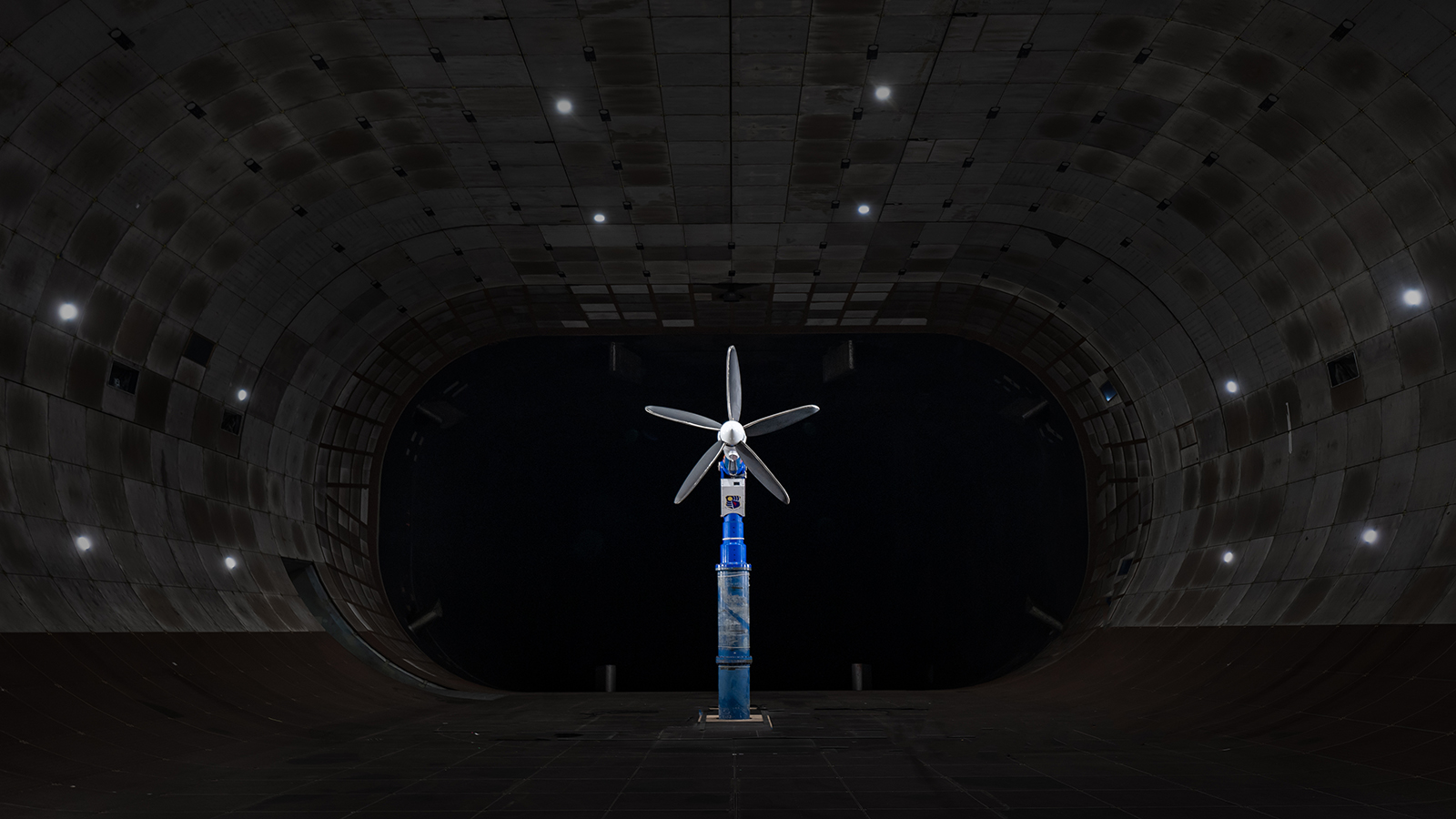Stay Up to Date
Submit your email address to receive the latest industry and Aerospace America news.
The Aeroacoustics Technical Committee addresses the noise produced by the motion of fluids and bodies in the atmosphere and the responses of humans and structures to this noise.
In January, NASA completed tests of a newly developed quiet and efficient spacecraft cabin ventilation fan in the Acoustical Testing Laboratory at Glenn Research Center in Ohio. A 72-channel microphone array measured in-duct mode sound power levels. NASA published the fan geometry in its report, “Highlights of Aeroacoustic Tests of a Metal Spacecraft Cabin Ventilation Fan Prototype,” to support further research on low-noise fans for long- duration human space missions.
In February, California-based Joby Aviation began wind tunnel testing its electric air taxi propellers in the 40-by-80-foot National Full-Scale Aerodynamic Complex at NASA’s Ames Research Center in California. The performance and acoustic test data of the full-scale propeller system will support Joby’s efforts to obtain FAA type certification. In June, Joby received an FAA Special Airworthiness Certificate to start flight testing its production prototype.
In March, a Pratt and Whitney and RTX Technology Research Center team completed aerodynamic drag measurements on various noise optimized novel liner architectures and identified leading concepts for low noise and low fuel burn, under phase three of FAA’s Continuous Lower Energy, Emissions, and Noise, or CLEEN, program. These high-performance, low-noise acoustic liners are to be installed in commercial engine fan ducts.
In March, NASA announced the Safe, Low-Noise Operation of UAM in Urban Canyons via Integration of Gust Outcomes and Trim Optimization, a three-year University Leadership Initiative led by Boston University. Researchers will develop prediction tools for community noise of advanced air mobility, AAM, aircraft operating in urban environments.
Also in March, researchers from the Université de Sherbrooke in Quebec, Canada, conducted anechoic wind tunnel tests on seven small quadrotor drones, creating a database of acoustic measurements in various operating conditions. With the database, Sherbooke researchers tested reduced acoustic models and classified the noise signatures with neural networks. The resulting model can efficiently discriminate the flight mode of the tested drones with a single microphone.
In March, researchers at NASA’s Langley Research Center in Virginia published the 2022 Proprotor Optimization Data Set containing performance and acoustic data for four reference-geometry proprotors tested in hover and axial forward flight. The release expands NASA’s openly available UAM Noise Working Group database, which industry and research organizations reference for tool validation and technology development.
At the AIAA Aviation Forum in San Diego in June, Whisper Aero of Tennessee unveiled its Whisper Jet aircraft concept in a series of technical papers and a keynote, and displayed a mockup of the vehicle. The design includes distributed ducted electric propulsion with large-blade-count fans for low-noise operation. CEO Mark Moore presented acoustic data from wind tunnel and flight testing during a keynote presentation.
From March through August, researchers at Penn State conducted an acoustic measurement campaign of a highly instrumented 2.3-meter-diameter reconfigurable multirotor aircraft at Mid-State Regional Airport in Philipsburg, Pennsylvania, to inform new noise certification procedures for AAM aircraft with support from FAA’s Aviation Sustainability Center. Researchers will evaluate measurement and analysis procedures to characterize multirotor aircraft noise, to identify opportunities to reduce noise via the flight control system and to validate Penn State’s flight simulation-based noise prediction system for AAM aircraft.
In July, a Dutch appeals court decision cleared the way for a government-mandated reduction of yearly movements at Amsterdam’s Schiphol Airport from the previous limit of 500,000 to a limit of 452,500 by 2024, motivated by persistent community noise concerns. Dutch airline KLM had previously argued against a reduced cap on movements and, in June, offered an alternative plan to reduce noise that
included investment in newer, quieter aircraft.
Contributors: Joshua Blake, Sheryl Grace, Eric Greenwood, L. Danielle Koch, Stéphane Moreau, Nicole Pettingill and C. Aaron Reimann
Stay Up to Date
Submit your email address to receive the latest industry and Aerospace America news.




